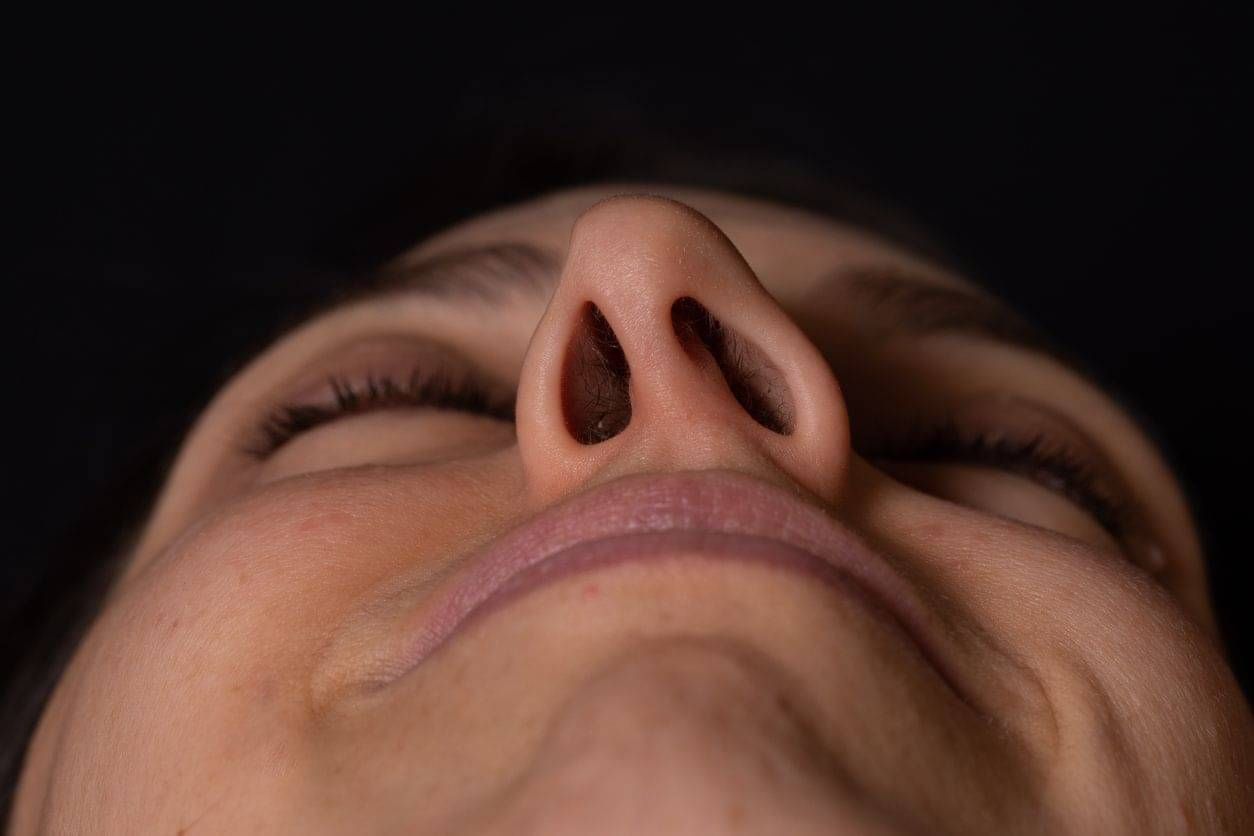Nose Pathology
Nasal Obstruction (Blocked Nose)
The nose can become obstructed due to conditions that cause inflammation of the nasal lining or mechanical blockages to airflow, often occurring simultaneously. Individuals with hay fever (allergic rhinitis) typically experience year-round or seasonal swelling of the nasal lining, along with progressive thickening or or enlargement of the turbinates. Exposure to allergens can cause these structures to swell and obstruct nasal passages.
A deviated nasal septum or abnormalities in the nasal bones, which can result from facial trauma or natural facial growth, are other common causes of nasal obstruction. Some individuals may develop excessive growth of septal cartilage, causing it to bend inward and block airflow.
Yet another issue that is frequently overlooked is "nasal valve collapse," where the external nasal support tissues collapse inward during inhalation. One may find some relief pulling on their cheek manually or applying nasal strips while sleeping. Nasal polyps and occasionally more serious underlying conditions can also lead to significant nasal blockage, requiring prompt treatment.


Investigations & Management
It is essential to identify and treat all underlying causes in order to achieve normal breathing. This involves addressing two factors: causes contributing to nasal swelling (e.g. allergies, infections, overuse of decongestants etc.) and structural issues (like enlarged turbinates, deviated septum, nasal valve collapse or enlarged adenoids).
Comprehensive treatment is crucial because leaving any underlying cause untreated can perpetuate nasal blockage despite other interventions. While some conditions respond well to medication alone, others may require surgical intervention and hence treatment approaches may vary. For instance, allergies can often be managed effectively with steroid nasal sprays, used seasonally or in some cases, throughout the year. When medications do not help, surgery might be necessary.
Turbinoplasty is a surgical procedure involving the reshaping and reduction of turbinate bone and tissue. This significantly improves airflow and reduces the need for ongoing steroid spray use to maintain clear breathing. However, management of allergy symptoms like itching, sneezing, and a runny nose, may still necessitate use of steroid sprays.
Certain patients may benefit from septoplasty and turbinoplasty (involving various technologies) as outpatient procedures, offering minimal recovery time. For those with more complex nasal obstructions, augmentation rhinoplasty may be required to comprehensively address structural issues including nasal valve collapse.